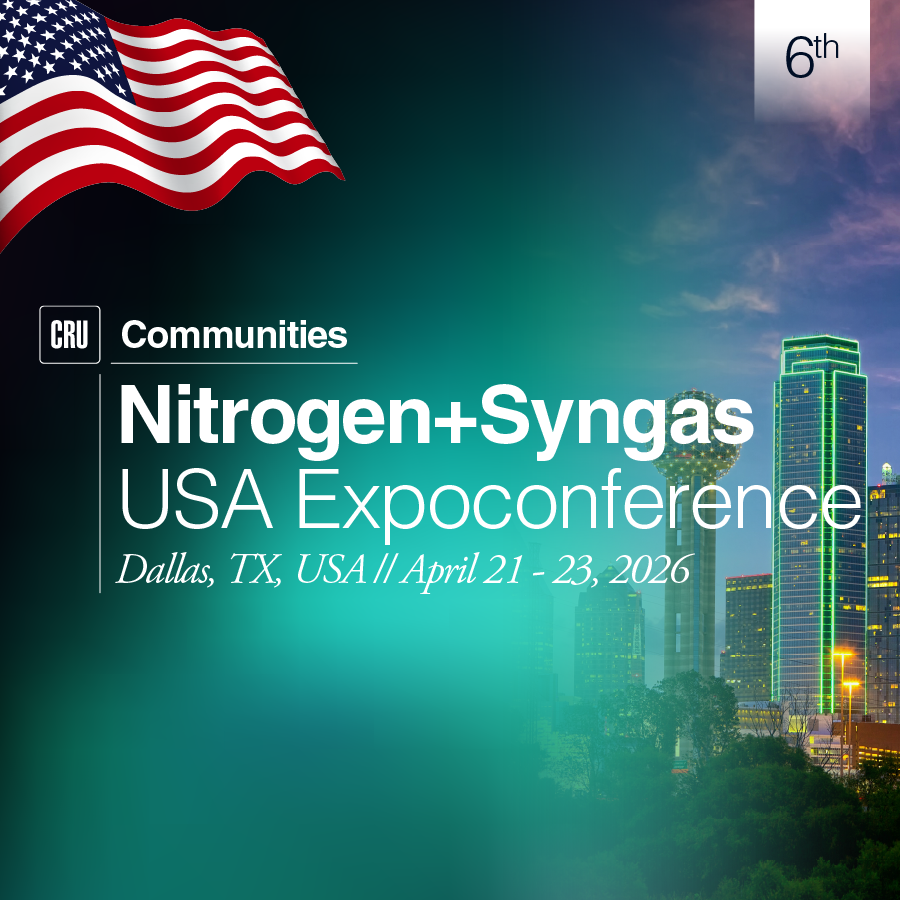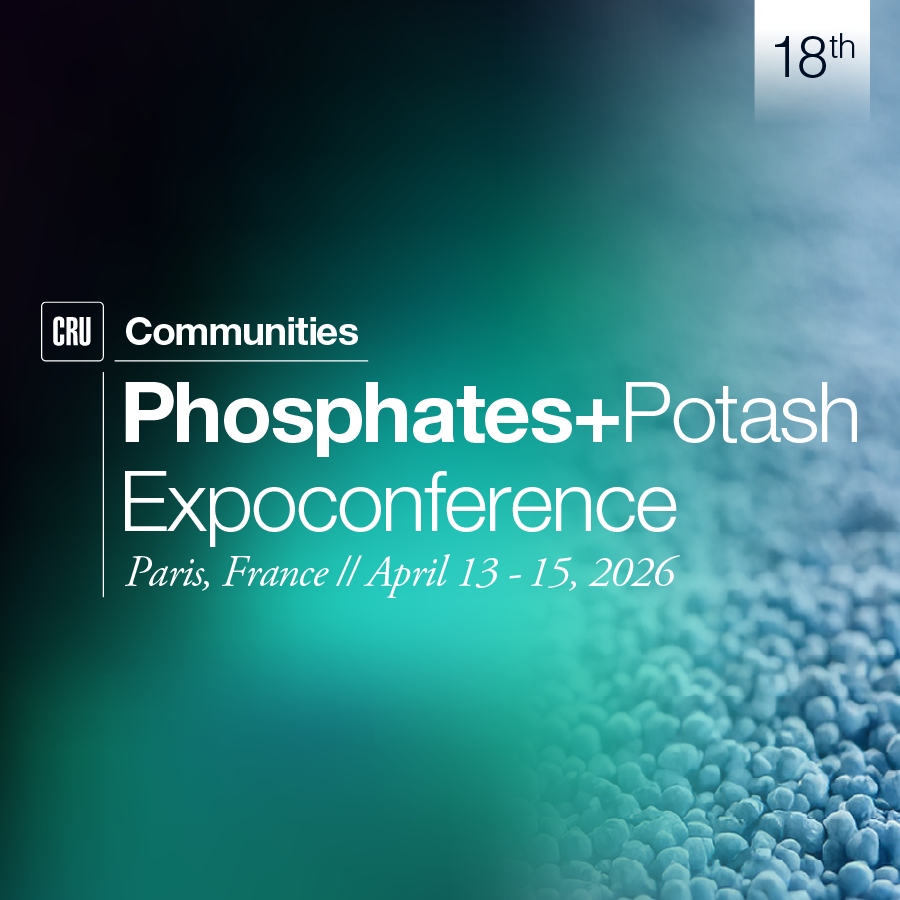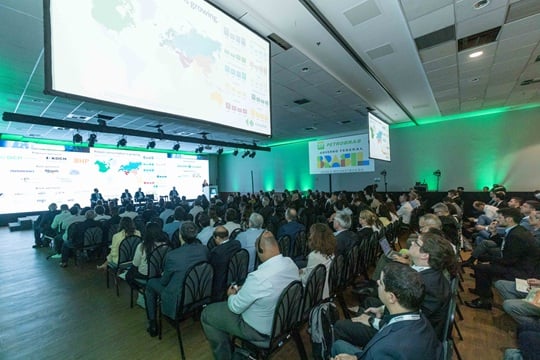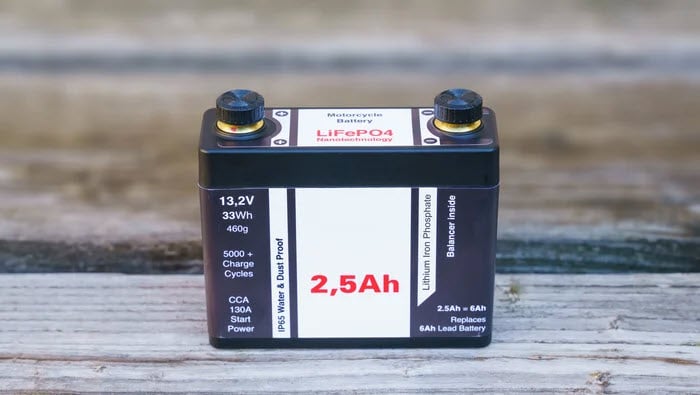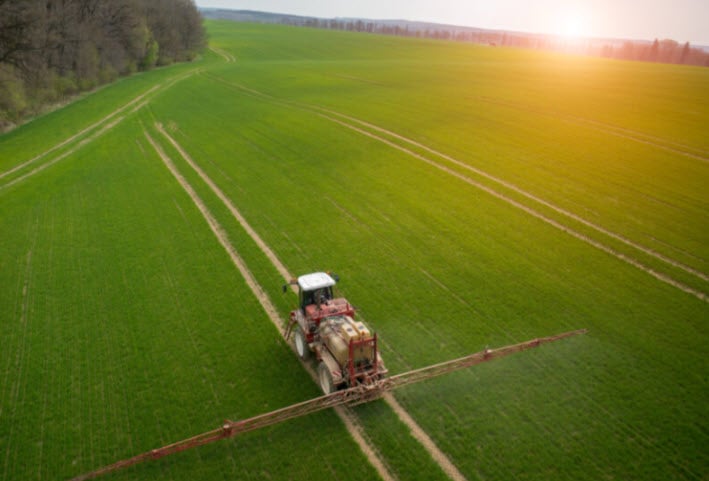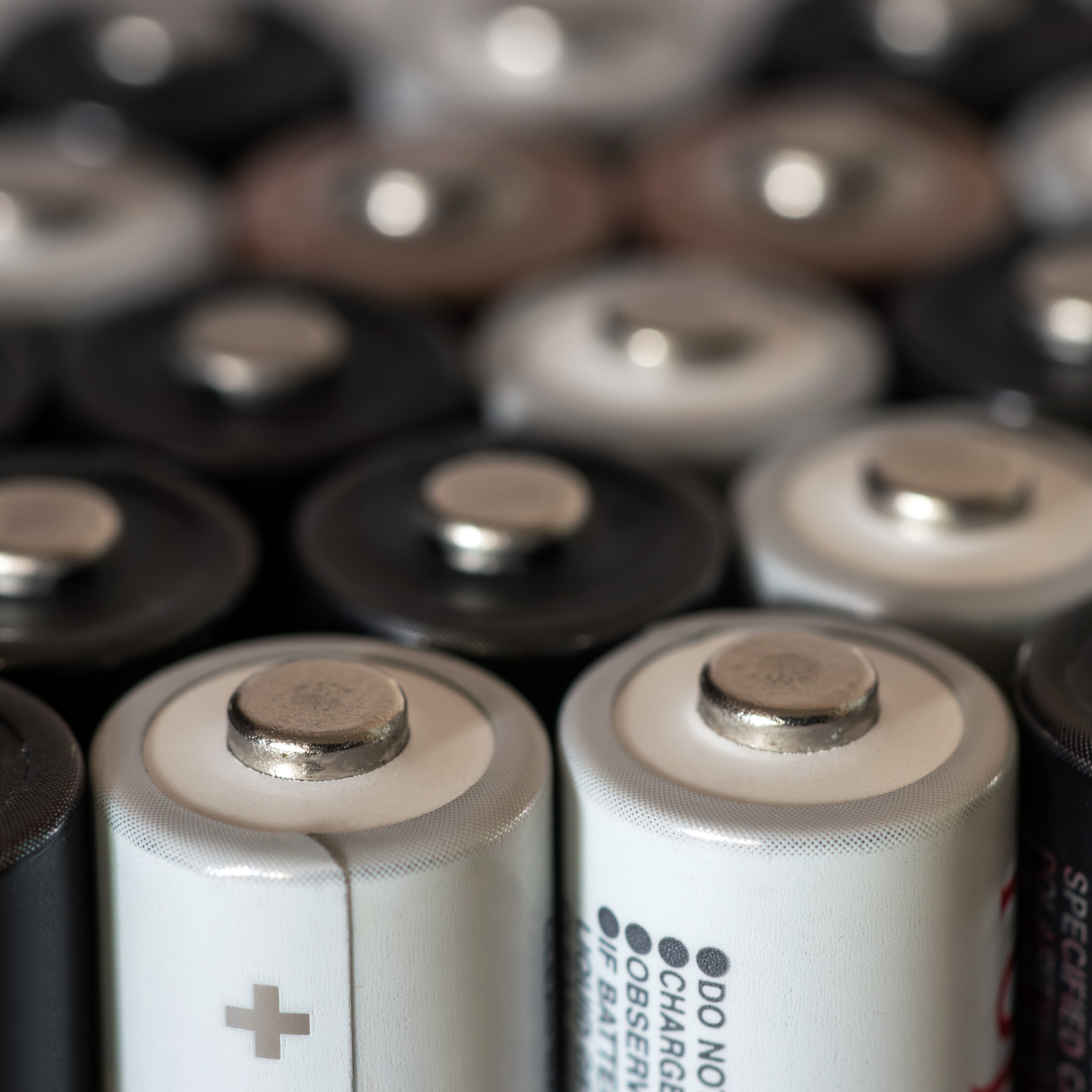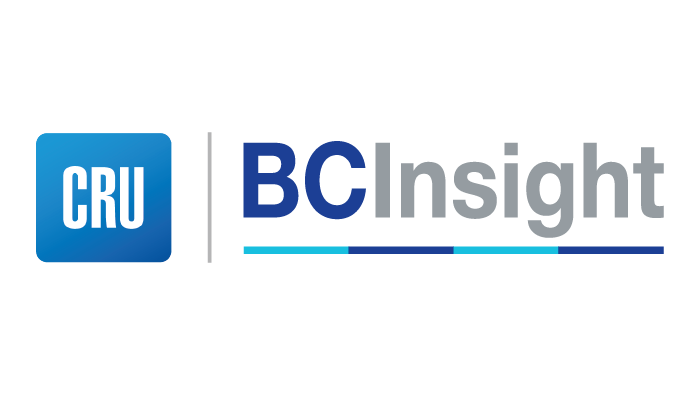New investments in fertilizer projects in Nigeria are adding substantial production capacity to the West Africa region. However, CRU forecasts growth in fertilizer consumption will lag far behind supply growth over the next five years, and we expect a significant share of new supply to be exported out of the region.
A huge amount of potential demand is waiting to be unlocked in West Africa, but a number of obstacles need to be overcome before local farmers are in a position to increase fertilizer application rates. In 2017, there are signs that real steps are afoot to diminish some of these obstacles with possible upside potential for regional fertilizer consumption growth.
Crop yields in West Africa are exceedingly low by international standards. The large majority of farms are owned by smallholders: often single families growing food crops for subsistence and occasionally cash crops to sell at market. These farms tend to be rainfed, with insufficient water management and little or no irrigation; seeds used are often of poor quality; farming techniques are outdated and inefficient. Perhaps most significantly, these farms use little, if any, fertilizer. CRU Consulting estimates that fertilizer application rates in West Africa averaged only a tenth of those in Western Europe in 2016.
With 32.5 million people in the region classified as undernourished by the FAO, and a significant proportion of the region’s food being imported, there is an urgent need to increase farm output. Developing the agricultural industry is a critically important step towards stable, long term economic development. For a region that contains ten of the poorest 25 countries in the world, the importance of agricultural development cannot be overstated.
Increases in West African agricultural production in recent years can largely be attributed to expansions in the harvested arable land area, but the limits of this are being reached. In order to continue increasing crop production, farmers in the region will need to focus on increasing yields. While adoption of higher yielding varieties of seeds can go some way towards achieving this, there is an unavoidable and urgent need to replenish soils which have been mined of their nutrients for decades through intensive crop cultivation. Without nutrient replenishment through balanced fertilizer application, low nutrient levels in West African soils will continue to represent a severe limiting factor on regional crop yields, food security and sustainable economic development.
One significant factor which limits fertilizer application rates in the region is inadequate supply and access to fertilizer. Historically, West Africa has been import dependent for the fertilizer it uses. There are currently only three facilities producing chemical fertilizer in the whole region, totalling roughly 2.1 million tonnes of annual production capacity. Two of these are urea plants in Nigeria, relying on locally abundant natural gas resources. The third is a phosphate fertilizer plant in Senegal, which leverages the country’s local phosphate rock resources. However, a large share of phosphate rock production in Senegal – and effectively all phosphate rock production in Togo – is exported from the region as a raw material for mineral fertilizer production overseas.
There is a network of fertilizer blending sites throughout the region with the ability to process imported fertilizer products into balanced NPK blends. Here too, Nigeria is home to the most developed industry, with more than 30 blending operations throughout the country. Mali, Ghana and the Ivory Coast also have several blenders each; Burkina Faso and Togo have one each.
However, much of the blending capacity in the region has until recently remained idle; in fact, many of the plants have never reached active production. In many cases, the blenders have been inactive for so long that the equipment has deteriorated or become obsolete. Significant investment is required to reactivate production at these facilities.
Despite the pressing need for increased fertilizer consumption in West Africa, a significant proportion of the fertilizer currently produced in the region is exported. Since 2010, CRU estimates that almost 25% of Nigerian urea production has been exported, mostly to South America. As Nigerian urea production is forecast to grow strongly over the next five years, CRU estimates that over 70% of output will be exported by 2020. These forecasts point to obstacles to demand which are not strictly supply related.
Insufficient understanding of the benefits of fertilizer application is one of the main causes of low fertilizer application rates in the region. Subsistence farmers in particular are not always educated on the science of fertilizer application and potential yield, despite the admirable work of NGOs in the region. For those farmers big enough to supply local markets with produce, the threat of drought and lack of appropriate insurance against this risk prevent them from trusting that an acceptable return on investment in fertilizer can be obtained.
However, the greatest obstacle to West African fertilizer demand growth is the cost of the fertilizer itself. In West Africa, up to 50% of the cost to the farmer of a 50kg bag of fertilizer comes after the bag has left the factory gate. For imported product in the region, beyond the cost of production and shipping to West Africa itself, there are four main components that continue to increase costs for farmers: port charges, inland transportation costs, marketing and distribution costs, and finance costs.
- Port charges are the costs associated with using port facilities and services, such as charges for unloading cargo, site occupation, pilotage, etc. Often these charges increase because of inefficiencies and lack of maintenance at local ports. The low capacity of ports in the region, combined with inefficient unloading procedures, increases waiting and transfer times, as well as processing costs for each cargo. Shallow port drafts also hinder the docking of larger vessels and so prevent potential economies of scale. A concerted effort to upgrade port facilities in the region has been going on in recent years. For instance, a $1.5 billion upgrade of Tema Port in Ghana has commenced, aiming to triple capacity by the end of 2019. This follows upgrades at Abidjan Port in the Ivory Coast, started in 2015, and a planned upgrade of Conakry Port in Guinea confirmed in late 2016.
- Land transportation adds significant additional cost, particularly to remote inland markets. West Africa covers millions of square kilometres, much of it connected by a network of ageing infrastructure. Both roads and trucks are old and poorly maintained. Rail infrastructure where it exists – such as between Dakar and Bamako – can reduce costs when scheduling allows. Major roads are marginally more common in West Africa, but are often plagued by potholes and degraded paving. Most countries in the region do not have axle load limits, and so roads deteriorate much faster than they can be maintained. Roads can also be dotted with dozens of checkpoints that push up the delivered costs yet further. Inefficiencies in service play a role, too. Transport companies frequently take the form of a single man with a truck, and even the largest companies in the region command relatively small fleets on average. This means they cannot easily coordinate shipments, make trucks available in specific locations promptly, or arrange for backhauls.
- Marketing and distribution costs are the mark ups applied to fertilizer as it moves through the supply chain. But the additional stages in the West African supply chain have a multiplier effect on these costs. Having said that, CRU Consulting’s research indicates that lack of competition, barriers to entry and a lack of economies of scale play a more significant role in raising fertilizer costs by the time the fertilizer reaches the farmer.
- Finance costs represent another significant obstacle along the fertilizer supply chain in West Africa. Interest rates can be prohibitively high, frequently in excess of 30%. Additionally, the collateral required to back financing is substantial, up to or even beyond 100% of the loan amount. Several countries in the region do subsidise finance costs, but to varying levels of effect. In Senegal, the government deposits roughly $25 million into a national bank for agricultural credit, which offers farmers a subsidised interest rate of 7.5% and private sector participants, such as importers, 12 – 16%. However, even under subsidised financing options, many applicants are denied loans or offered short term alternatives for insufficient amounts, largely due to the high default rate of agricultural loans.
Each of these factors has the effect of raising the real cost of fertilizers to farmers in West Africa to a multiple of the cost faced by larger farmers with greater resources elsewhere in the world. Numerous government subsidy programmes have been implemented in an attempt to counterbalance these additional costs. They are a staple of the region, commanding large portions of governmental budgets. Despite this, many are poorly structured and underfunded.
Along with an inability to track where the subsidies are truly going, the broad stroke approach to subsidies can result in many cases of leakage within systems. Extremely slow repayment of distributors after they’ve sold product at the subsidised price to farmers only incentivises them to raise prices to shield themselves from risk, which in turn contributes to raising the true cost to farmers.
However, after years of constrained growth in West African fertilizer consumption, there are hopeful signs that progress is being made in addressing some of the obstacles. The most obvious sign has been investment in local fertilizer production capacity. Following the recommencement of West African urea production by Notore Chemicals in Nigeria in 2009, there has been a trickle of announcements which promises to turn West Africa into a major fertilizer producing region. While this does not guarantee an increase in regional growth in fertilizer consumption, improved availability of product locally is the first step in reducing the cost of fertilizers.
Since Notore’s move, Indorama and OCP are the two global players who are now leading the way with investments in regional supply. They look set to challenge Yara as the leading international supplier of fertilizers in the region. With sales offices in Ghana, the Ivory Coast and Cameroon, Yara has for decades demonstrated a strong commitment to developing fertilizer markets in West Africa through programmes like the Ghana Grains Partnership and the Agricultural Growth Corridors initiatives. Its multinutrient NPK fertilizers are an effective method of delivering balanced fertilization in the region, particularly considering the logistical challenges of delivery, synchronised shipments of N, P and K fertilizers individually, and in the absence of operational NPK blending capacity.
Indorama is responsible for the second – and now largest – urea plant in the region, which commenced production and sent its first export shipment in July 2016. After some teething issues with the new plant and a brief halting of exports, production is back on track and approaching nameplate capacity. In 2014, Indorama also acquired a 78% majority stake in Senegal’s ICS operation, the region’s only phosphate fertilizer plant. At the time of the acquisition, ICS had shut down its granulated fertilizer production operation. This has now been reactivated and the facility has become an important supplier of compound NPKs to the local market as well as to land locked Mali and Burkina Faso.
Meanwhile Morocco’s OCP, the world’s largest phosphate producer, has been active in announcing and implementing ambitious investment plans for West Africa. Evidently recognising the strong potential for fertilizer demand growth, the company has dedicated one of its recently completed Jorf Lasfar hubs, the “Africa Fertilizer Complex” to supplying African markets. In support of this initiative, the company announced in 2016 the establishment of ‘OCP Africa’ which is tasked with developing agricultural markets across the continent. Thirteen subsidiaries are being opened across Africa including subsidiaries in the Ivory Coast, Senegal, Benin, Cameroon and Ghana – a clear commitment to the demand potential in the West Africa region.
OCP has since been highly active in making supply and cooperation announcements which suggest major impact on West Africa fertilizer markets. It agreed in December 2016 with Fertilizer Producers and Suppliers of Nigeria (FEPSAN) and the government of Nigeria to supply phosphate fertilizers to Nigerian blenders in 2017 for the production of 1 million tonnes of NPK blends. It is planned that the agreement will significantly reduce the price of fertilizers on the Nigerian market and reduce or remove the need for government subsidies. Already in July 2017, the agreement has had the effect of re-activating 12 of 28 idle NPK blending plants in the country, and 20 million 50kg bags of fertilizer are expected to be distributed by the end of December 2017, portending a sharp increase in fertilizer consumption. OCP has signed a similar Memorandum of Understanding with the Republic of Guinea, gifting 20,000 tonnes of fertilizer and supplying 80,000 at prices which will reduce or eliminate govern-ment expenditure on fertilizer subsidies in the country.
However, of greater significance to the development of West African fertilizer markets are signs that the company’s plans go further than simply supplying Moroccan produced fertilizers to local importers. In May 2017 it was reported that OCP has plans to construct a fertilizer storage and blending unit at the port of Abdijan (Ivory Coast) which will act as a sub regional distribution hub. OCP has also announced plans to set up ten new "farmer house" centres across Africa by 2020. The strategically located centres are designed to make available the products and services that small farmers need to develop their business in a sustainable way. Key objectives of the centres are to promote innovation and encourage good agricultural methods. One of the first centres will be inaugurated in the Kaduna region of central Nigeria.
While evidence of the effectiveness of such centres remains to be proven, they demonstrate recognition by international producers of the obstacles to higher application rates. Coupled with ongoing supply efforts in the region, these new investments appear set to significantly reshape West Africa fertilizer markets in 2017 and beyond. If successful, these efforts have the potential to lend significant momentum to abolishing some of the main obstacles constraining fertilizer demand in the region. There could be enormous benefits to crop yields, food security and ultimately sustainable economic development in West Africa.




